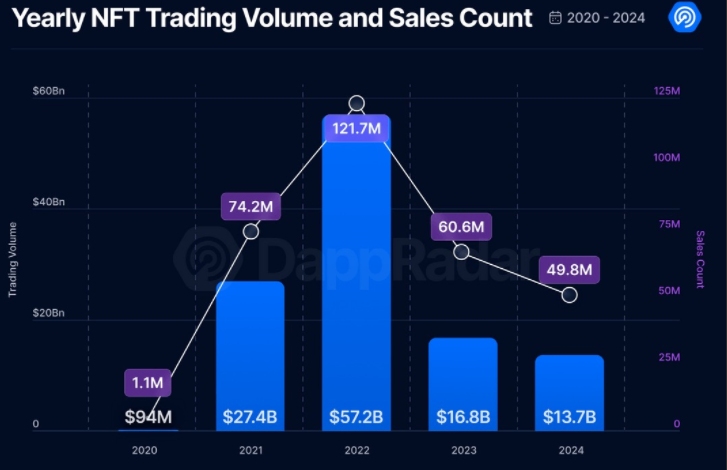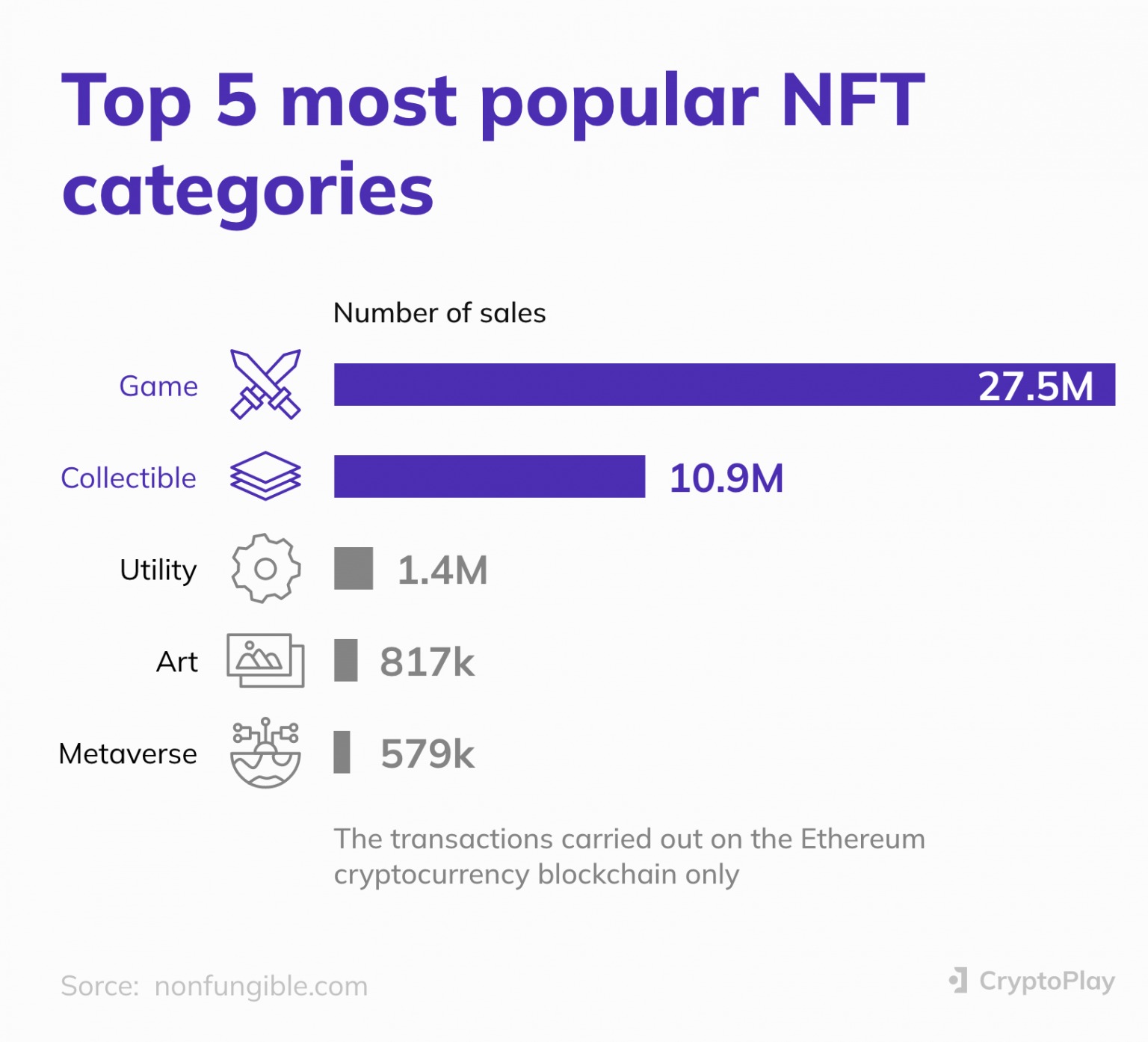- NFTs are evolving from digital art into ownership, identity, and utility tools across gaming, music, and real-world assets.
- Core value lies in scarcity plus functionality—NFTs with access, utility, or integration into platforms hold lasting demand.
- High-potential projects feature credible teams, strong communities, real utility, and partnerships with established ecosystems.
- Risks include scams, liquidity issues, and regulatory uncertainty, making diversification and due diligence essential.
Beyond the Hype
TradingKey - When non-fungible tokens, or NFTs, first graced mainstream headlines, the assets were almost singularly associated with digital art and speculative collectables. Articles revolved around record-breaking pixelated images or celebrity-driven collection sales. However, while the cycles of hype created fortunes and lost others, the underlying technology was and is inherently more varied than its initial applications suggested.
Today, NFTs are expanding beyond the art world. They're emerging as ownership, identity, and utility instruments in applications ranging from gaming to real estate. Investors, meanwhile, must look beyond superficial speculation and instead focus on fundamentals, utility, and practical use.

Source: https://www.dappradar.com
The Essence of NFT Value
At their core, NFTs are virtual ownership certificates stored on blockchains. Unlike cryptocurrencies like Bitcoin, no two NFTs are identical, and instead of being interchangeable units, they represent distinct assets. That uniqueness creates digital scarcity, and that's key to their value.
Scarcity alone, however, is not sufficient. Scarcity in art drives collector demand. Scarcity outside of art only assumes meaning if connected to utility. An in-game parcel of land, music license, or access credential NFT possesses intrinsic value since it bestows actual functionality. Investors must then be able to distinguish between token factories that produce artificial scarcity and those that integrate NFTs into functional systems.

Source: https://www.cryptodose.net
Expanding Applications
One of the most notable areas of development for NFTs is within the gaming industry. Play-to-earn models and blockchain games use NFTs to represent characters, items, or property. Whereas games, in the traditional sense, have assets locked within their own proprietary platforms, NFT assets can be owned, traded, and transferred between platforms. Such experiments, as we learned through games like Axie Infinity, have shown both the promise and failures of the format, and newer games aim to get it right.
Even entertainment and music have room for growth. Fans will receive exclusive access to content, backstage passes, or rights to royalties through the grant of NFTs. Reducing intermediaries, the artist can reach their audience, simultaneously developing engagement and monetisation opportunities.
Another area is tokenizing tangible assets. Property title, event tickets, or receipts of supply chain NFTs create opportunities for transparency and efficiencies. Imagine a concert ticket wherein authenticity is locked on-chain, decreasing fraud and scalping. Such frameworks bring NFTs back from speculation to infrastructure.
Identifying High-Priority Projects
With thousands of NFT projects entering the market, good sense is required. Investors must get past marketing hype and estimate the actual potential. Team credibility is the first criterion here. Just as in start-ups, execution depends on the people behind the project. Transparent teams with relevant experience appease more than anonymous developers chasing quick bucks.
The second is the strength of the community. NFTs thrive on network effects, and vibrant, active communities survive over time. Signs of active wallet counts, social activity, and aftermarket activity are indicators of community health. Utility is the third factor. NFTs which incorporate utility, access, governance, or inclusion in broader ecosystems are best prepared for survival. Speculative artworks will rise and fall, but utility-incorporated NFTs, ingrained in functional platforms, maintain demand forever.
Ultimately, ecosystem integration and cooperation are crucial. Projects that align themselves with current brands, platforms, or protocols have more legitimacy and opportunities for adoption.
Risks and Red Flags
It’s a dangerous environment for NFTs. There are numerous cash grabs, built on hyperbole and unrealistic tokenomics. Rug pulls, whereby developers abandon dead projects after a funding raise, continue to happen at an alarming rate. Investors must remain vigilant for over-optimistic roadmaps and promises of massive returns. Liquidity is a further issue. Unlike fungible tokens, NFTs cannot be easily traded in large quantities. Closing positions frequently involves identifying a willing buyer, which may not be available in illiquid markets.
Regulatory uncertainty is also in sight. Regulators now regard NFTs as securities and consumer protection laws. Ventures which hold out hope of profit-sharing or investment-type deals may come under closer control, adding legal risk.
Portfolio Role of NFTs
NFTs will not control portfolios but may serve as high-risk, high-reward investments. There must be some level of diversification, spreading the exposure across multiple projects, industries, and chains. A diversified approach would be a combination of blue-chip collections and healthy communities, utility-based plays in games or music, and speculative plays in real-world tokenization.
Institutional adoption will remake the landscape. Traditional companies are exploring NFTs in loyalty schemes, ticketing, and asset ownership. Real-world integration projects will become more prevalent than speculative ones once corporate actors become involved.
By far, investors’ most important attributes are patience and judgment. Chasing hype most of the time ends badly. Projects which have good teams, intrinsic utility, and growing usage have the best chance of eventual success.
Conclusion: From Speculation to Infrastructure
NFTs are evolving from speculative artworks to infrastructure elements of the virtual world. Their intrinsic value lies not in pixel art but in enabling ownership, identity, and use cases in industries. Success will not belong to the noisiest projects, but to those that apply the elements of NFTs into core ecosystems, delivering actual solutions.
It's time investors look beyond the noise and discover the fundamentals of promising NFTs. Whatever tomorrow's future holds for NFTs will be shaped by value-driven projects, driven by utility, use, and sustainability. And you understand how to distinguish noise from substance. In that case, you can reserve yourself an early spot among the most revolutionary inventions of the internet of tomorrow since the dawn of cryptocurrencies.
NFTs may have started in art, but the story is just getting started. And for those willing to look behind the scenes, they represent a frontier where speculation bows to infrastructure, and where promising initiatives can redefine digital ownership for years to come.


